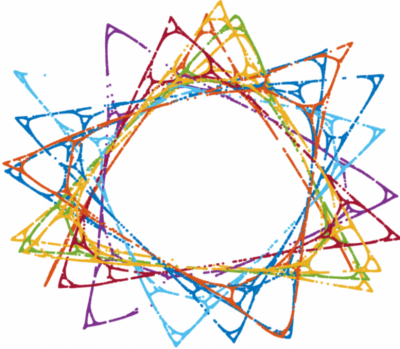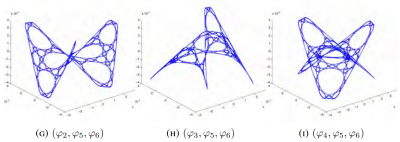REU Math UConn 2025 abstract basilica
REU Math UConn 2025 abstract Sierpinski
REU_Math_UConn_2025 Dirichlet talk
REU_Math_UConn_2025 Dirichlet text
Topics: Laplacian Eigenmaps, Orthogonal Polynomials, Quantum Information
Participants:
Farabie Akanda; Haverford College
Elijah Anderson; Wesleyan University
Elizabeth Athaide; Massachusetts Institute of Technology
Faye Castro; Texas State University
Sara Costa; University of Hartford
Leia Donaway; Swarthmore College
Hank Ewing; Appalachian State University
Caleb Findley; University of Texas at Arlington
August Noë; University of California Santa Cruz
Sam Trombone; Hamilton College
Kai Zuang; Brown University
and
John Ackerman; UConn
Mentors:
Bernard Akwei, Rachel Bailey, Maxim Derevyagin, Luke Rogers, Alexander Teplyaev
Final Presentation: Perfect State Transfer in Cycle Graphs – Elizabeth Athaide, Leia Donaway and Sam Trombone
Poster: PST in Cycles Poster
Final Presentation: Early State Exclusion Slides- Sara Costa, Caleb Findley, Kai Zuang
Jason Freitas and Joshua Huang
Mentor: Oleksii Mostovyi


REU participants:
Bobita Atkins, Massachusetts College of Liberal Arts
Ashka Dalal, Rose-Hulman Institute of Technology
Natalie Dinin, California State University, Chico
Jonathan Kerby-White, Indiana University Bloomington
Tess McGuinness, University of Connecticut
Tonya Patricks, University of Central Florida
Genevieve Romanelli, Tufts University
Yiheng Su, Colby College
Mentors: Bernard Akwei, Rachel Bailey, Luke Rogers, Alexander Teplyaev
Convergence, optimization and stabilization of singular eigenmaps
B.Akwei, B.Atkins, R.Bailey, A.Dalal, N.Dinin, J.Kerby-White, T.McGuinness, T.Patricks, L.Rogers, G.Romanelli, Y.Su, A.Teplyaev
Eigenmaps are important in analysis, geometry and machine learning, especially in nonlinear dimension reduction.
Versions of the Laplacian eigenmaps of Belkin and Niyogi are a widely used nonlinear dimension reduction technique in data analysis. Data points in a high dimensional space \(\mathbb{R}^N\) are treated as vertices of a graph, for example by taking edges between points separated by distance at most a threshold \(\epsilon\) or by joining each vertex to its \(k\) nearest neighbors. A small number \(D\) of eigenfunctions of the graph Laplacian are then taken as coordinates for the data, defining an eigenmap to \(\mathbb{R}^D\). This method was motivated by an intuitive argument suggesting that if the original data consisted of \(n\) sufficiently well-distributed points on a nice manifold \(M\) then the eigenmap would preserve geometric features of \(M\).
Several authors have developed rigorous results on the geometric properties of eigenmaps, using a number of different assumptions on the manner in which the points are distributed, as well as hypotheses involving, for example, the smoothness of the manifold and bounds on its curvature. Typically, they use the idea that under smoothness and curvature assumptions one can approximate the Laplace-Beltrami operator of \(M\) by an operator giving the difference of the function value and its average over balls of a sufficiently small size \(\epsilon\), and that this difference operator can be approximated by graph Laplacian operators provided that the \(n\) points are sufficiently well distributed.
In the present work we consider several model situations where eigen-coordinates can be computed analytically as well as numerically, including the intervals with uniform and weighted measures, square, torus, sphere, and the Sierpinski gasket. On these examples we investigate the connections between eigenmaps and orthogonal polynomials, how to determine the optimal value of \(\epsilon\) for a given \(n\) and prescribed point distribution, and the dependence and stability of the method when the choice of Laplacian is varied. These examples are intended to serve as model cases for later research on the corresponding problems for eigenmaps on weighted Riemannian manifolds, possibly with boundary, and on some metric measure spaces, including fractals.
Approximation of the eigenmaps of a Laplace operator depends crucially on the scaling parameter \(\epsilon\). If \(\epsilon\) is too small or too large, then the approximation is inaccurate or completely breaks down. However, an analytic expression for the optimal \(\epsilon\) is out of reach. In our work, we use some explicitly solvable models and Monte Carlo simulations to find the approximately optimal value of \(\epsilon\) that gives, on average, the most accurate approximation of the eigenmaps.
Our study is primarily inspired by the work of Belkin and Niyogi “Towards a theoretical foundation for Laplacian-based manifold methods.”
Talk: Laplacian Eigenmaps and Chebyshev Polynomials
Talk: A Numerical Investigation of Laplacian Eigenmaps
Talk: Analysis of Averaging Operators
Intro Text: Graph Laplacains, eigen-coordinates, Chebyshev polynomials, and Robin problems
Intro Text: A Numerical Investigation of Laplacian Eigenmaps
Intro Text: Comparing Laplacian with the Averaging Operator
Poster: Laplacian Eigenmaps and Orthogonal Polynomials
Results are presented at the 2023 Young Mathematicians Conference (YMC) at the Ohio State University, a premier annual conference for undergraduate research in mathematics, and at the 2024 Joint Mathematics Meetings (JMM) in San Francisco, the largest mathematics gathering in the world.
The University of Connecticut’s summer program brings together a small group of undergraduates to explore what it is like to do research in pure and applied mathematics. Over the course of 10 weeks, we follow research projects from beginning to end — starting with reading about the project, writing proofs/programs, performing calculations, and ending with writing up results. In the past, many of our projects have culminated in published articles and conference talks.
Applications will be accepted until the end of March, but early applications are strongly encouraged.
The program runs for 10 weeks, from late May to early August. Summer 2023 dates: 05/29/2023 — 08/05/2023
The REU program is primarily aimed at math and science majors, but your experience and interests are more important than your major. We primarily enroll students who have completed their sophomore or junior year, but sometimes we admit unusually well-qualified freshmen. We have NSF funding to support students who are U.S. citizens or permanent residents. This covers lodging and provides a stipend; the latter has previously been in the range of $4500-5000 for the summer. As this grant is intended to increase the participation of undergraduate students in mathematics research, we are particularly interested in applications from members of underrepresented groups, including women and minorities.
All applications are processed through the NSF REU application website, https://etap.nsf.gov. We will begin reviewing applications starting in early March; applications received after the deadline will be considered on a rolling basis.
Math REU groups from Amherst College, Tufts University, UConn, UMass and Yale University are getting together online on Thursday July 29th for a conference to share their summer research work. Check out the 2021 Math REU conference website
Title: Emmy Noether, Symmetry and the Calculus of Variations
Title: TBA
Abstract:
Title: Spectral Dimension of the Universe
Abstract:
We know that our usual space-time is four dimensional, but is it the same on a quantum scale? There is a recent physics theory that there is a so called dynamical dimensional reduction in quantum gravity. This talk will describe the basic mechanism for this dimension reduction, and a surprising connection to the talk by Chris Hayes.
Title: Fractals are also in the market
Abstract: How does a financial investor decide which trading strategy to apply? Analyzing and classifying financial data is crucial to make a decision. One general classification involves two types of price behaviors: trending or mean-reverting. In the former, increasing (or decreasing) returns will likely lead to further increasing (or decreasing) returns, while in the latter price increases will likely lead to price decreases (or vice versa).
In this talk we will discuss a way to mathematically describe these regimes and discover that fractals play a fundamental role in that description.
Title: Fractals and Dirichlet forms
Abstract: We will explore some simple examples of fractals, discuss dimensions of self-similar sets and then look at the basic ingredient in doing analysis (calculus) on some fractals: the construction of a self-similar Dirichlet form.
Title: Box-ball systems and Tableaux
Abstract: Box-ball systems give a combinatorial model of a soliton, or solitary wave. We discuss some results obtained by past REU students in this area.
Title: Introduction to financial mathematics
Abstract: We introduce some foundational ideas of financial mathematics, including the first and second fundamental theorems of asset pricing.
Title: Measurement
Abstract: Since its earliest days, mathematics has been used to measure things. Usually so that someone could tax them! But measuring even simple things like the length of a curve in the plane can present many challenges. We will walk through some of the difficulties one might encounter and learn a little about the mathematics that arises from them.
Math REU groups from Amherst College, UConn, UMass, Williams College and Yale University are getting together online on Thursday July 30th for a conference to share their summer research work. The conference website is at
Math REU groups from Amherst College, UConn, UMass, Williams College and Yale University are getting together online on Thursday July 30th for a conference to share their summer research work. The conference website is at